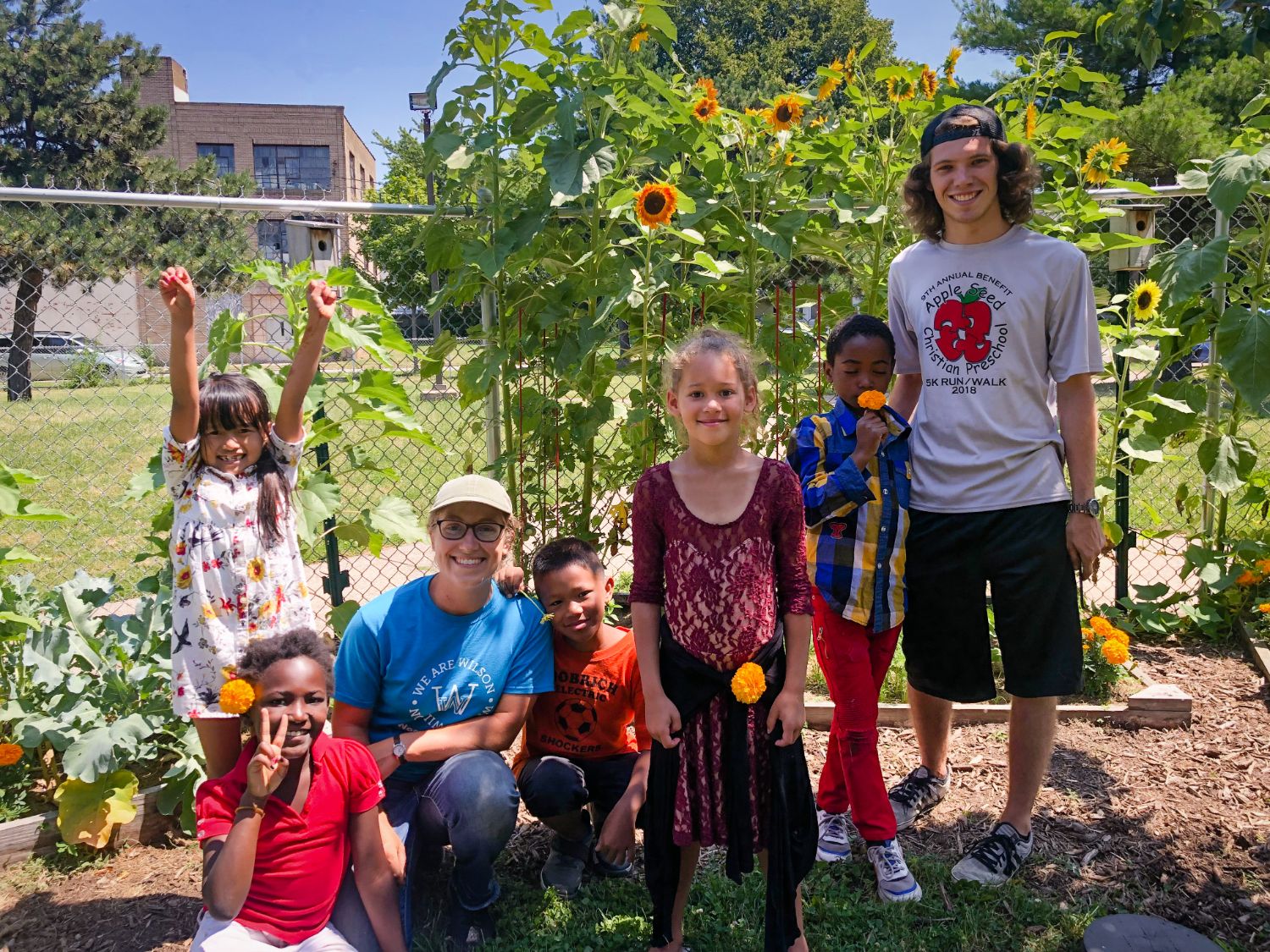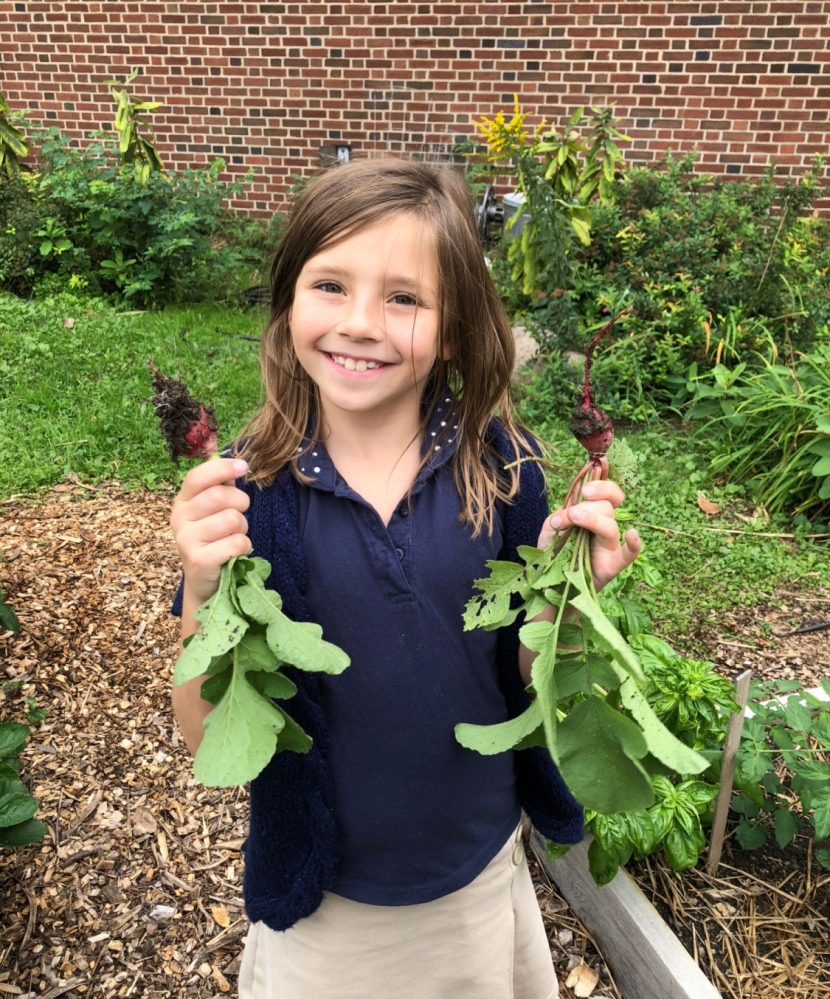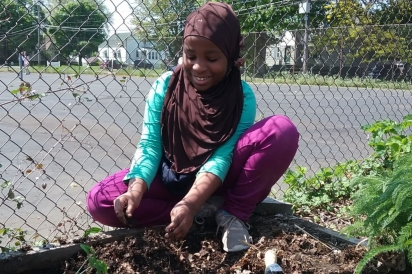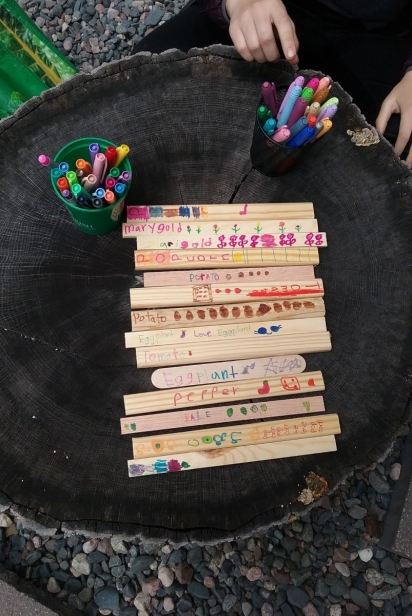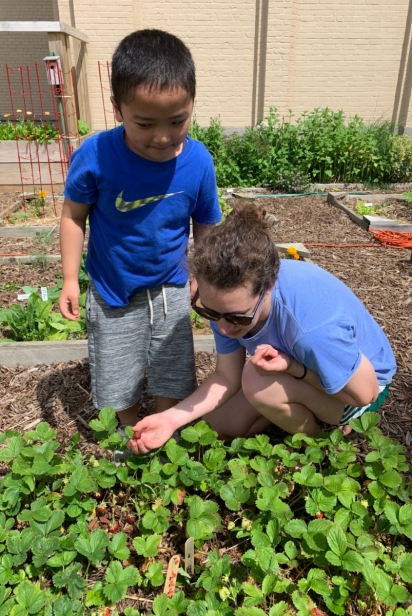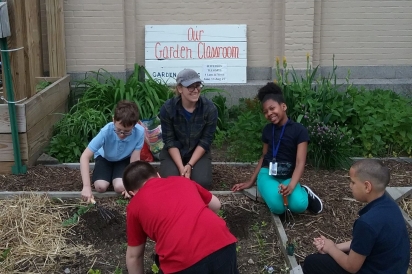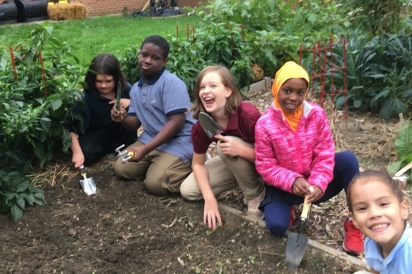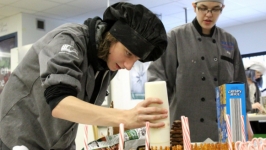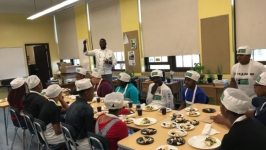Growing Gardens, Growing Gardeners
Gardens are springing up at schools everywhere—and with good reason. As our culture awakens from decades of disconnection from the sources of our food, it’s easy to see the value of engaging students in growing some of their own.
But it’s also common to dismiss school gardens as frivolous or of limited benefit. Sure—they’re well-meaning, and sure—they help kids understand that food doesn’t just come from the store. But are they really worth the extra trouble? Are they a wise use of resources, especially in districts where funds are scarce? Can gardens really change kids’ lives for the better?
In Erie’s Public Schools, they’re working to make those answers unequivocally “yes.”
The district, which encompasses multiple food deserts, is at the heart of a citywide urban gardening revival. And in June 2018, it was awarded a USDA Farm to School (F2S) grant—one of only two districts in Pennsylvania and 73 nationwide.
Doreen Petri, who recently retired after 40 years teaching environmental science, led the garden program’s outgrowth from a broader outdoor education initiative called Becoming Empowered by Living Our Natural Gifts, or BELONG: the perfect acronym for what Petri and others wanted to engender in Erie’s Public Schools.
“Kids feel a sense of belonging and connection to the outdoors, and you see this with many projects, not just gardens,” Petri says.
She’s watched rivalries evaporate as kids share the burden of hauling watering cans. “When you’re in the garden, you don’t care about how you usually get along with each other. You just dig in.”
Petri’s goal was to have a gardening presence at all 10 elementary, three middle and two high schools before she retired last June. In April, the final garden was established. Today, there are 14 gardens, plus horticulture and landscape management academic tracks at Erie High. And Petri is enthusiastically staying on as a voluntary consultant for environmental projects.
Students are learning where their food comes from and the financial benefits of growing it themselves. And they’re also getting the chance to meet farmers, learn about agricultural or landscape careers—or even milk a goat at the Waterford Fair.
“We’re trying to broaden their experiences and opportunities,” Petri explains. “We want to show them things that are beyond their everyday environment and hopefully give them some choices in the future.”
Petri acknowledges that it’s a bit early for some of the elementary students to be career-minded. But young students who really like gardening may grow into students who want to learn about being part of a food system or following a horticultural career path they’d have otherwise not imagined.
“We’re trying to have vertical alignment with lessons connecting to the gardens at every grade level at every school,” Petri says.
And that takes creativity—which Petri says Stephanie Ciner has in abundance. Ciner, part of the Lake Effect Leaders AmeriCorps VISTA Project, began working as an environmental educator in the district in July 2016, with a passion for gardening and local food initiatives that inspires her to connect the gardens to class subjects. She explains that “things like planting a seed, watering and weeding tie into academic standards, if you craft them in such a way.”
One educational component galvanized by F2S is “harvest of the month,” which matches curriculum across disciplines to seasonal produce, often harvested from the school gardens. Cherry tomatoes get top billing in September, so students may see word problems including cherry tomatoes in math class. (And if that doesn’t get students’ attention, Petri’s tomato costume surely will.)
F2S also prioritizes economic and community impact beyond schools that Ciner considers especially important for Erie, including an emphasis on schools procuring food from local farmers, and helping farmers obtain the certifications that will allow them to scale up and supply busy cafeterias.
“We feel like we’ve only just started to build relationships with farmers and producers,” Ciner says. She notes that other states are further along than Pennsylvania in incentivizing local purchasing. In a district that’s poorly funded, but wants to purchase local or higher-quality food, there’s still only so much available per child per meal.
Nonetheless, Metz Culinary Management, which provides food throughout the district, has been a vital partner, and Ciner says she’s been impressed by the energy they’ve put behind F2S and their interest in serving fresher, more nutritious food.
The USDA F2S grant awarded in 2018 was a planning grant, geared toward helping the district convene stakeholders and determine collective priorities as the program blossoms. This December, they’ll apply for a larger implementation grant, which could provide more permanent staffing and long-term sustainability.
Not surprisingly, funding is a major obstacle overall. “We could do a lot more,” Ciner acknowledges.
But they’re working toward financial self-sufficiency even now. Petri says Grover Cleveland School started over 200 plants in a greenhouse this spring—so many that no tomato or pepper plants needed to be purchased. “We’re working a lot on seed recovery and looking to get another greenhouse,” she adds, pointing out that it’s an opportunity for middle school students to grow the seedlings and provide them to elementary school student gardeners.
Even beyond that, “We want kids to be able to teach their families,” Petri adds. Other goals include tapping into Erie’s extensive immigrant populations and celebrating diversity in schools. Some New Americans came from agricultural societies and could teach about their cultures’ foods. And Petri imagines one day being able to ask neighborhood families, “Would you like to have a garden at home? We have the money—we’ll help you do that.”
Many families are already deeply involved with their school’s garden, and “have really taken it on,” she says. “It’s a transient population since students move on, but I always believed there would be people out there who would be passionate about this and see the value in it—and there have been.”
She and Ciner especially applaud a dedicated group of Erie County Master Gardeners who have lent their time and expertise, adding that enthusiasm from numerous community members and teachers throughout the district have also been instrumental in helping the program thrive.
“We have really supportive principals, and I can’t say enough about central administration and our school board,” Petri says. “They see the value for our children who can come from very challenging environments. What we are trying to provide for them can be life-changing and practical.”
Retirement, incidentally, has certainly not slowed Petri down. When I reached her by phone on a hot July afternoon, she was sitting on her porch—but getting ready to put in a pollinator garden at one elementary school that evening. She’d connected with a woman who was downsizing her abundant perennials and was delighted that her castoff plants could help students understand the importance of pollinators.
“We deal with a lot of different topics, not just growing vegetables,” says Petri.
But teaching kids to grow vegetables certainly has its charm.
Ciner tells me about sampling peas with second graders. “Several kids said, ‘We don’t like peas.’ Then we picked shelling and sugar snap peas, and the kids who had said ‘I hate peas’ got this look of complete shock, crunching down on a fresh pea for the first time, that this is a delicious food.
“We’ve had kids say, ‘I never knew that you could get food from a plant,’” she adds. “They’re so surprised that a carrot is dirty that they’ll ask, ‘What’s wrong with it?’”
Ciner also loves how gardens “seem to tie together different generations in a way that’s really positive. They say, for example, that they’re going to tell Grandma that they learned to trellis peas. There’s a pride in it.”
Pearl Patterson, an intern with Penn State Behrend’s student garden, has also noticed how spending time with children in the school gardens bridges generational gaps. “I share my knowledge with them, and they share theirs with me,” she says. “Few other educational spaces allow for that kind of connection.”
Though the program started as an educational benefit for children in the district, it has evolved to include many Erie community partners who are addressing food access in a positive way.
“I think this is a huge transitional time for our communities,” Petri says. “Grocery stores are closing, and people don’t have access to healthy foods—so we’re helping them learn about gardening in urban and small spaces.”
“It’s a huge amount of work,” Ciner acknowledges, “but it’s beautiful to see people from all different areas coming together to make this happen.”
“I feel a real groundswell and confluence of groups working collectively,” Petri adds. “The excitement is building, and I want our children to be part of that.”
“There’s such a sense of wonder, surprise and curiosity when they come out into the garden,” Ciner reflects. “When you see a student excited about something, and wanting to learn more, it’s really rewarding every day. Even in our age of TV, technology and disconnection from the outdoor world, they can still find magic in going out into a garden.”


